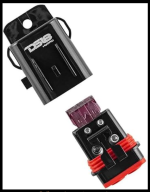Hi
Need some help.
I have a CYC X1 Pro Gen4.
X12 controller.
Today I fitted a new battery
TFL branded.
48V, 20AH, 40A BMS, Samsung 50E 13S4P.
It’s allowing me to draw almost 4000w.
When testing with my 52V Em3ev battery, it shuts down at the correct ~1900w, so I think the display is accurate.
Faulty BMS?
Will these batteries in this config even allow this kind of draw?
Need some help.
I have a CYC X1 Pro Gen4.
X12 controller.
Today I fitted a new battery
TFL branded.
48V, 20AH, 40A BMS, Samsung 50E 13S4P.
It’s allowing me to draw almost 4000w.
When testing with my 52V Em3ev battery, it shuts down at the correct ~1900w, so I think the display is accurate.
Faulty BMS?
Will these batteries in this config even allow this kind of draw?


